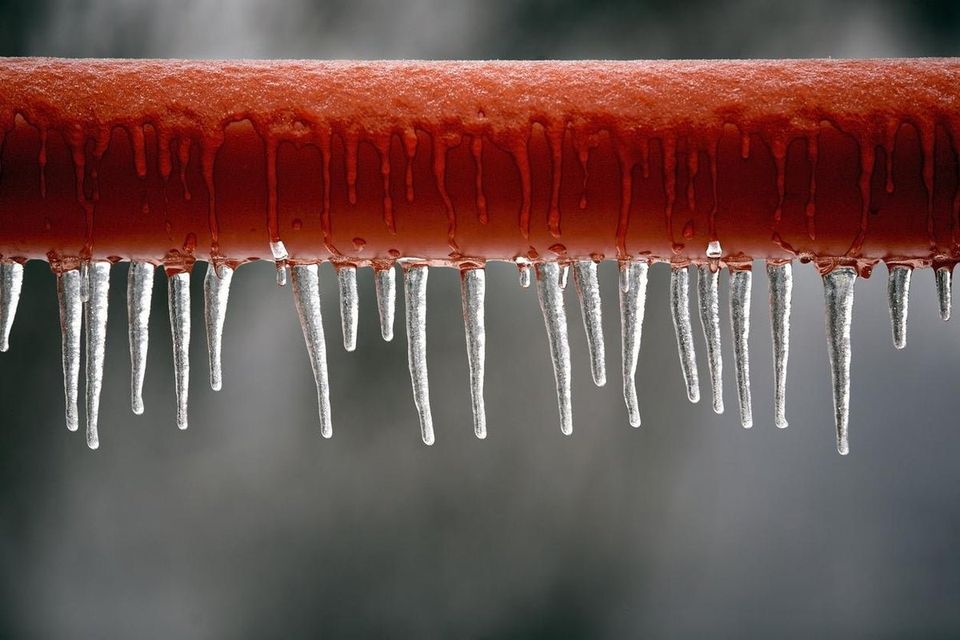Preventing Frozen Pipes in Cold Weather: Professional Advice
Preventing Frozen Pipes in Cold Weather: Professional Advice
Blog Article
Here in the next paragraphs yow will discover a lot of amazing ideas on the subject of 6 Ways to Prevent Frozen Pipes.

Cold weather can wreak havoc on your plumbing, specifically by freezing pipelines. Right here's exactly how to avoid it from happening and what to do if it does.
Intro
As temperature levels decrease, the risk of frozen pipes rises, possibly leading to pricey repairs and water damages. Recognizing just how to prevent icy pipes is critical for house owners in cool climates.
Understanding Icy Pipelines
What causes pipelines to ice up?
Pipelines ice up when revealed to temperature levels listed below 32 ° F (0 ° C) for expanded durations. As water inside the pipes ices up, it increases, putting pressure on the pipeline walls and possibly causing them to burst.
Dangers and problems
Frozen pipes can bring about supply of water disturbances, building damage, and costly fixings. Ruptured pipelines can flooding homes and create extensive structural damage.
Signs of Frozen Pipeline
Determining frozen pipes early can prevent them from bursting.
How to recognize icy pipelines
Try to find reduced water flow from taps, uncommon odors or noises from pipelines, and noticeable frost on subjected pipes.
Avoidance Tips
Protecting vulnerable pipelines
Wrap pipes in insulation sleeves or make use of warm tape to protect them from freezing temperature levels. Focus on pipelines in unheated or external locations of the home.
Heating methods
Keep indoor areas sufficiently heated, specifically locations with pipes. Open cupboard doors to permit cozy air to circulate around pipelines under sinks.
Safeguarding Exterior Pipes
Yard hose pipes and outside taps
Separate and drain yard hoses before winter. Mount frost-proof spigots or cover outdoor taps with insulated caps.
What to Do If Your Pipelines Freeze
Immediate actions to take
If you believe icy pipes, keep taps available to alleviate stress as the ice thaws. Utilize a hairdryer or towels taken in warm water to thaw pipes slowly.
Long-Term Solutions
Architectural adjustments
Consider rerouting pipelines far from outside wall surfaces or unheated areas. Add additional insulation to attic rooms, basements, and crawl spaces.
Upgrading insulation
Buy high-grade insulation for pipelines, attics, and walls. Appropriate insulation helps preserve constant temperatures and decreases the threat of frozen pipes.
Verdict
Protecting against icy pipes needs proactive actions and quick feedbacks. By comprehending the reasons, signs, and preventive measures, homeowners can safeguard their pipes during cold weather.
6 Proven Ways to Prevent Frozen Pipes and Protect Your Home
Disconnect and Drain Garden Hoses
Before winter arrives, start by disconnecting your garden hoses and draining any remaining water. Close the shut-off valves that supply outdoor hose bibs and leave the outdoor faucet open to allow any residual water to drain. For extra protection, consider using faucet covers throughout the colder months. It’s also important to drain water from any sprinkler supply lines following the manufacturer’s directions.
Insulate Exposed Pipes
Insulating your pipes is an effective way to prevent freezing. Pipe insulation is readily available at home improvement stores and is relatively inexpensive. Pay close attention to pipes in unheated areas such as the attic, basement, crawl spaces, or garage. Apply foam insulation generously to create a buffer against the cold. You can also wrap your pipes in heat tape or thermostat-controlled heat cables for added warmth.
Seal Air Leaks
Inspect your home for any cracks or openings that could let in cold air. Seal any holes around the piping in interior or exterior walls, as well as the sill plates where your home rests on its foundation. Additionally, make sure to keep your garage door closed unless you’re entering or exiting. Leaving it open creates a significant air leak that can lead to frozen pipes.
Allow Warm Air Circulation
During cold snaps, it’s essential to allow warm air to circulate evenly throughout your home. Leave interior doors ajar to promote better airflow. Open kitchen and bathroom cabinets to help distribute heat consistently around the rooms. If you have small children or pets, be sure to remove any household chemicals or potentially harmful cleaners from open cabinets for safety.
Let Faucets Drip
A small trickle of water can make a big difference in preventing ice formation inside your pipes. When temperatures drop significantly, start a drip of water from all faucets served by exposed pipes. This continuous flow helps prevent the water from freezing. Additionally, running a few faucets slightly can relieve pressure inside the pipes, reducing the chances of a rupture if the water inside does freeze.
https://choateshvac.com/6-proven-ways-to-prevent-frozen-pipes-and-protect-your-home/

Do you really like more info about 6 Ways to Prevent Frozen Pipes? Make a review directly below. We'd be delighted to find out your feelings about this blog entry. In hopes that you visit us again in the near future. So long as you enjoyed reading our blog post kindly do not forget to share it. Thanks a lot for your time. Revisit us soon.
This Website Report this page